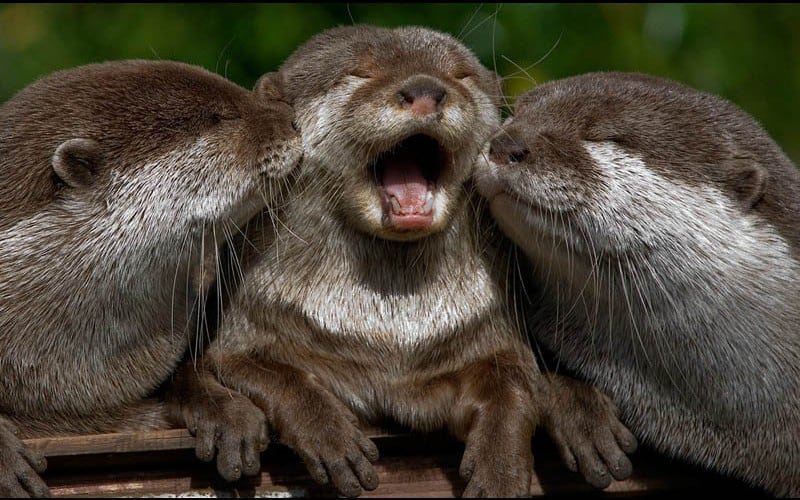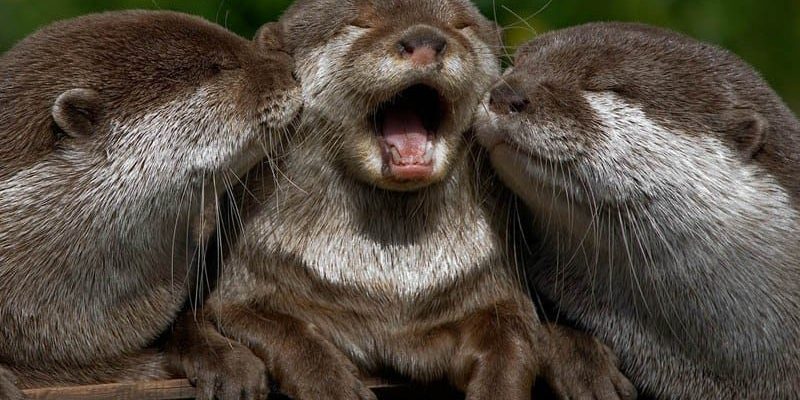
When we talk about river otters, we’re diving into a world where agility meets intelligence. They’re not just surviving; they’re thriving. Picture this: a river otter darts through a stream, its sleek body moving effortlessly. It’s on a mission—not just for food, but for its livelihood. Let’s explore what these remarkable animals eat and how they catch their meals.
Diet: What River Otters Eat
River otters have a diverse diet that changes based on their habitat and the season. Usually, they feast on aquatic animals like fish, crustaceans, and even the occasional amphibian. You might be surprised to learn that their meals can vary widely.
- Fish: This is usually their main course. They love fish like salmon, trout, and catfish, which they catch with surprising skill.
- Crustaceans: Crabs and crayfish also make regular appearances on their menu. These crunchy snacks are often found in rivers and lakes.
- Amphibians: Frogs and other small creatures occasionally get snagged too. They add a little variety to the otter’s diet.
- Birds and Small Mammals: Sometimes, if fish are scarce, otters won’t hesitate to hunt birds or small mammals that come too close to the water.
Seriously, these otters have a taste for adventure, trying out different food sources when needed. They often hunt alone but can also work together in groups to catch larger prey.
Hunting Techniques: How River Otters Catch Their Food
River otters are incredibly resourceful hunters. They use a mix of clever strategies that keep their meals coming. One of the most exciting methods is called “still hunting.” This is where an otter quietly waits in the water, nearly motionless, before lunging at fish with a burst of speed. It’s like being a sniper in the animal world—quiet, patient, and oh-so-effective.
They also employ the technique of “diving.” River otters are built for swimming. With webbed feet and streamlined bodies, they can plunge deep underwater to chase fish. They can hold their breath for several minutes, which gives them an edge over their aquatic prey. Honestly, it’s impressive to watch them dart around, almost like they’re playing a game of tag with the fish!
In addition, otters sometimes use stone tools. Yes, you heard that right! They’ve been observed using rocks to crack open shellfish. Imagine them sitting there, sitting on their favorite rock, cracking open a crab like it’s a snack at the movies. It shows just how intelligent they are when it comes to hunting.
Social Hunting: Teamwork Makes the Dream Work
While river otters can hunt solo, they often enjoy teaming up for a meal. When hunting in groups, called rafts, they can take down larger prey, like bigger fish or even small mammals. Isn’t it amazing how teamwork plays a role in their hunting strategies?
When hunting together, otters display a level of coordination that’s impressive. They’ll swim in circles to herd fish into tight groups, making it easier for the entire group to catch dinner. It’s a bit like a synchronized swimming routine, just with a much higher stakes dinner!
Also, hunting in groups isn’t just about getting food. It’s a way for them to bond and socialize. They’ll chase each other around and play, making their hunting trips an exciting event full of fun and games.
Seasonal Diet Changes: Adapting to the Environment
River otters are masters of adaptation. As seasons change, so does their diet. In spring and summer, when fish are abundant, you’ll find them feasting on their favorite catches. But come fall and winter? They have to get a little creative.
During colder months, otters rely more on crustaceans and small mammals. The aquatic environment freezes over in some areas, limiting their access to fish. Imagine it: just when you think they’re done for, these clever creatures find ways to survive.
Migration patterns in fish may also affect their hunting locations. Otters will follow the movement of fish, always eager to stay connected to their food sources. This adaptability is vital for their survival, showcasing how resourceful they are in facing nature’s challenges.
The Role of River Otters in Their Ecosystem
River otters might seem like they’re just having fun chasing fish, but they play a crucial role in maintaining the health of their ecosystems. By keeping fish populations in check, they help balance aquatic environments.
When otters prey on fish, they naturally limit overpopulation, which can lead to a decrease in water quality. Less fish means less competition for food, giving other species a chance to thrive. It’s like nature’s own management system at work!
Furthermore, their hunting activities can help control the population of smaller aquatic creatures. This keeps everything in balance, making sure that no one species takes over the ecosystem. It’s a delicate dance, one that highlights the importance of every creature in our natural world.
The river otter is truly an enchanting creature. From their varied diet to their smart hunting strategies, they showcase the wonders of adaptability and survival. Whether they’re diving for fish or cracking open shellfish, they do it with a mix of skill and playfulness that captivates anyone lucky enough to observe them.
In the grand scheme of things, river otters remind us of the importance of balance in nature. Each hunting strategy they employ, every meal they catch, plays a vital role in their ecosystem. So next time you see an otter at play, remember that beneath all that cuteness lies a talented hunter doing its part to keep nature in harmony. It’s a beautiful reminder of how life thrives in the wild!

